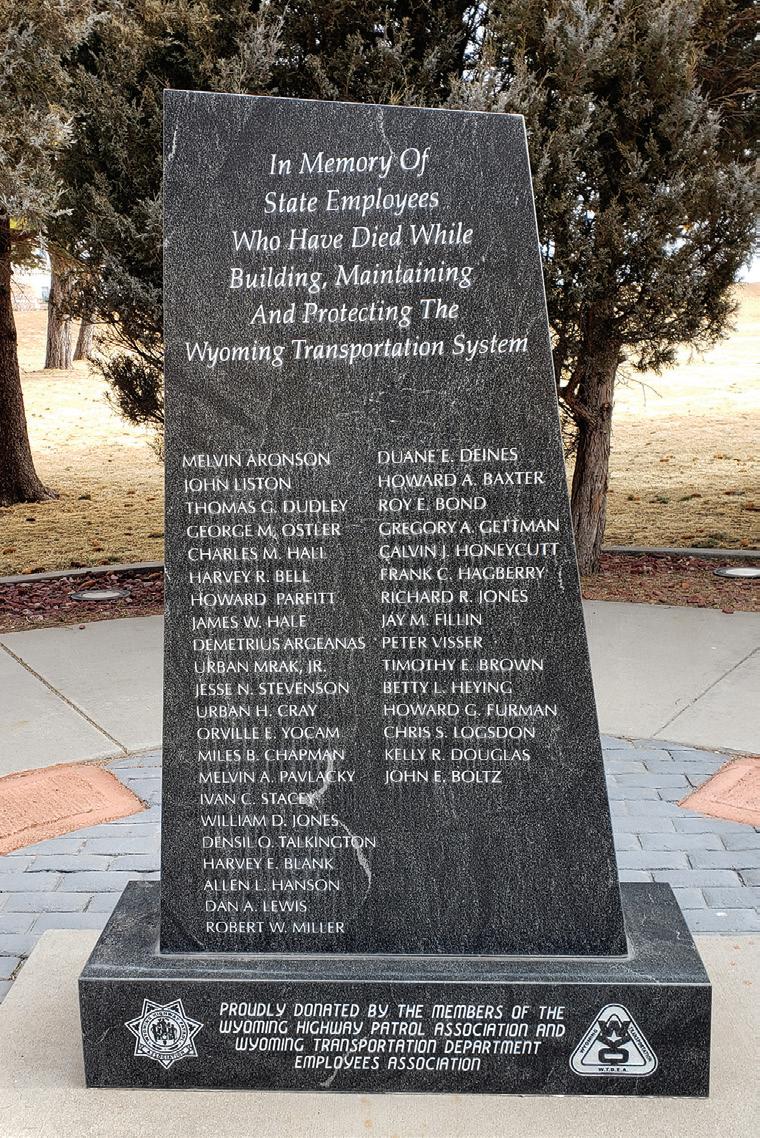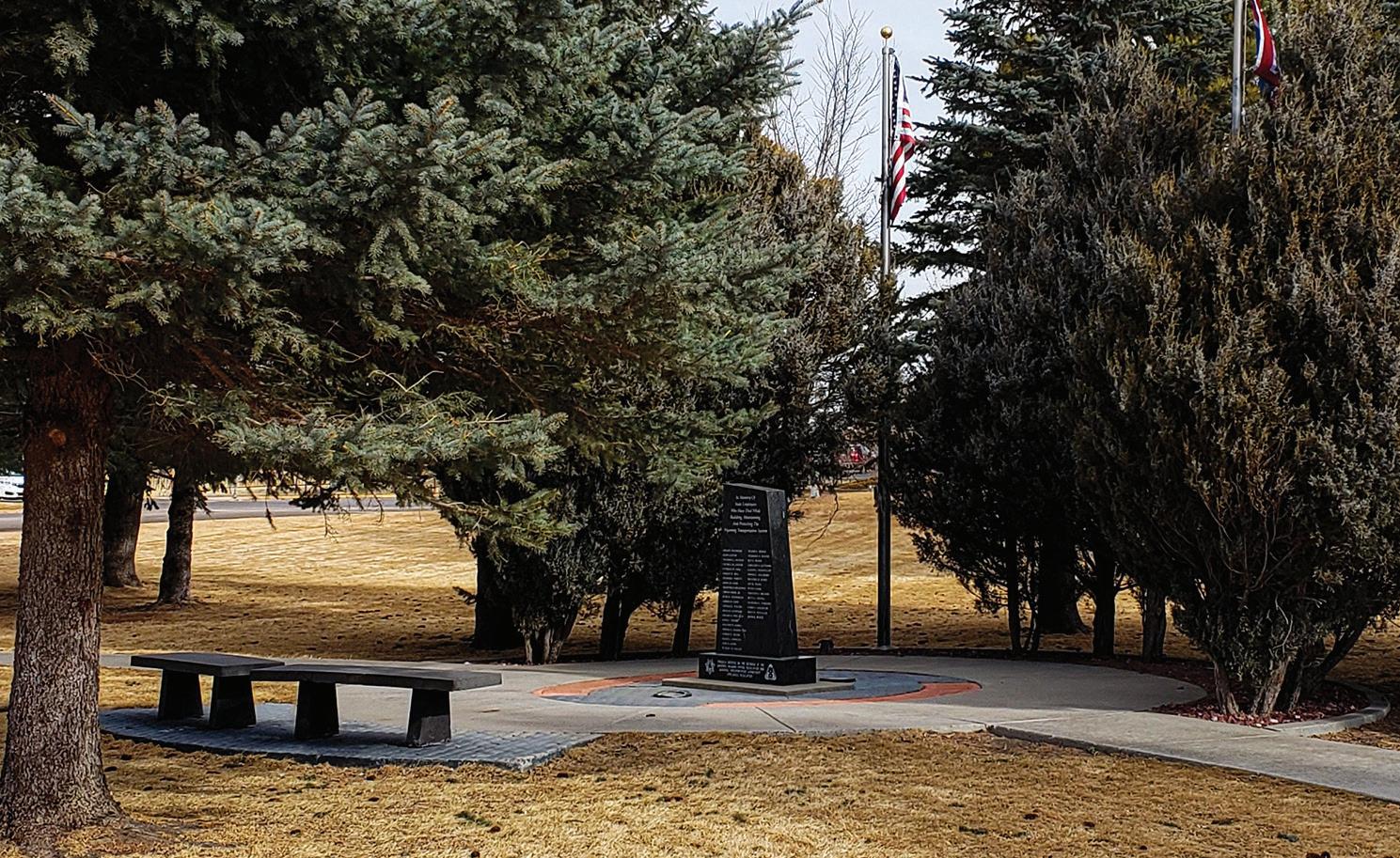
9 minute read
Game & Fish
by WYDOT
Zebra mussels found in several Wyoming pet stores
By Sara DiRienzo, Wyoming Game & Fish
An invasive mussel that poses a serious threat to Wyoming’s natural resources and water systems has been found in a number of pet stores across the state. The Wyoming Game and Fish Department has confirmed the presence of zebra mussels in a variety of moss balls, a product sold at many aquarium and pet supply stores. Game and Fish is urging anyone who has this product to carefully dispose of it and aquarium water immediately. Proper disposal is essential to help mitigate the potentially catastrophic effects mussels could have for the state.
“Zebra mussels are an extremely destructive aquatic invasive species,” said Game and Fish Chief of Fisheries Alan Osterland. “Once they become established in reservoirs, lakes or even city water systems, they wreak havoc. They remove nutrients from water, clog pipes and waterways, damage boats and out-compete native mussels. Further, in many cases, zebra mussels are impossible to remove and could have costly impacts for Wyoming.”
A moss ball is a popular tank decoration made of a green filamentous algae used to oxygenate the water. It’s important that anyone who has purchased a moss ball closely follow the recommended steps for disposal. To dispose: • Remove any pets from the water and tank.
• Remove the moss ball, other plants and any water from the aquarium and put them into a heat-safe pot. Do not dispose of any water down the drain or toilet.
• Inspect the moss ball and tank for zebra mussels and if you find any contact your local Game and Fish regional office or local warden.
• Boil the moss balls, plants and any water it’s been in contact with for at least five minutes
• Dispose of the moss ball and other plants in trash. • Pour out the boiled water on a semi-permeable surface. That could be a houseplant or outside — like grass or soil — that is not located near standing water or a storm drain.
Do not flush the moss ball or pour aquarium water down any drains, toilets or into nearby water sources like a local pond or creek. These actions could spread zebra mussels throughout the water system.
“We are urging folks to take extra precautions and please follow these disposal instructions. It’s essential for our state’s fisheries, wildlife and communities that these steps are followed. It will be key to mitigating the potential impacts Wyoming now faces,” Osterland said.
Anyone who finds zebra mussels in their tank must call the local Game and Fish regional office so a representative can collect the sample. Possessing any aquatic invasive species (AIS), such as zebra mussels, is illegal, and people are
If so, DO NOT...
Don’t release your aquarium critters or plants into the wild by dumping them in a river or lake.
Don’t dump the tank water in the toilet, down the sink or in the sewer system. What?
Moss balls are a popular plant choice for aquariums and decorative displays. But they also can be carriers of zebra mussels, which if detected in Wyoming’s waters, could have catastrophic impacts to the water, the biodiversity of the area, recreation, municipalities and water users. Why?
Moss balls have been found to contain an invasive mussel that would be catastrophic to Wyoming waters. If you have purchased a moss ball, please see instructions below on how to safely dispose of the ball and any water it came in contact with.
If you have a moss ball, please follow these steps to keep Wyoming’s waters free of zebra mussels.
STEP 1
Remove any pets from the water and tank. STEP 2
Remove the moss ball, other plants and any water from the aquarium and put them into a heat-safe pot. Do not dispose of any water down the drain or toilet. STEP 3
Inspect the moss ball and tank for zebra mussels and if you find any contact your local Game and Fish regional office.
STEP 4
Boil the moss balls, plants and any water it’s been in contact with for at least five minutes. STEP 5
Dispose of the moss ball and other plants in trash. STEP 6
Pour out the boiled water on a semipermeable surface. That could be a houseplant or outside — like grass or soil — that is not located near standing water or a storm drain.
Anyone who finds zebra mussels in their tank should call the local Game and Fish regional office so a representative can collect the sample.
required to report the discovery within 48 hours.
Zebra mussels are striped, sized less than 2-inches. They attach to any hard surfaces such as metal, glass, plastic, stone, wood or rocks. They are extremely resistant to cold temperatures and many chemicals. Hot water is the most effective way to kill them and keep them from establishing.
“Even if you can’t see mussels, it doesn’t mean they aren’t there,” Osterland said. “When zebra mussels are in their immature stage, called veligers, they are so small you can’t see them. But, they can grow in even tiny amounts of water. That is why it is so important for everyone to take precautions.”
Pets and other aquatic animals are not immediately impacted by zebra mussels.
“Pet fish, turtles and the like should be safe; just clean your tanks and follow the disposal instructions for the plants and water,” said Osterland. “Never release your pet into the wild or pour your tank water into a natural water source. This can also spread invasive and other unwanted species.”
Wyoming is one of several states across the US to identify zebra mussels in pet and aquarium stores in connection to moss balls. The department is working closely with other states and federal agencies to address this nationwide issue. Game and Fish is urging any stores to immediately remove this product from shelves and contact their local Game and Fish office.
Zebra mussels have never been identified in a Wyoming water source. Aquatic invasive species, like zebra mussels, quagga mussels, and others, are typically transported on watercraft. Annually, Game and Fish devotes $1.3 million to the AIS prevention program, which includes inspecting and decontaminating boats entering the state and its waters as the first-line for defense for the protecting Wyoming. More information on the prevention of AIS is available on the Game and Fish website.
Wildlife biologists in the Green River Region have been working on projects to help safely move wild ungulates across the Highway 789 corridor. One of those projects involved clearing brush surrounding the two large culverts at Cottonwood Creek to make them as visually open as possible for mule deer traffic in the Baggs Migration Corridor. Earlier in February, Game and Fish personnel, with help from the Little Snake Conservation District and a few volunteers, completed the work. Trail cameras installed by the culverts show mule deer using the culverts. Biologists hope to eventually extend the deer fence along the highway to the north of its existing end point. This culvert “underpass” will become a critical component to that effort.
Migration study continues, 75 animals collared
In multiple studies between 2004 and 2017, nearly 600 individual pronghorn from the Sublette pronghorn herd were fitted with GPS satellite tracking collars, bringing to light one of the longest intact big game migration corridors in North America. Last month, capture crews deployed an additional 75 GPS collars on doe pronghorn in numerous areas across the entirety of the herd. These newly collared animals will provide the fine-scale location data needed to delineate migration routes and reveal important stopover areas where animals stock up on nutrients along the way. The data will also inform managers on where to locate local conservation measures such as fence modifications and improved highway wildlife crossings. n
By Christina Fisher with speeches by Governor Jim Geringer; Wyoming Commission
This is the epitaph engraved on the WYDOT Employee Me- Chairman Chuck Brown; Director Gene Roccabruna; and Patrol morial on the north lawn of the WYDOT Headquarters building. Col. John Cox. Many family members of the deceased were also
Sadly, many Cheyenne and Wyoming residents do not know able to attend and shared stories of their loved ones. this is here. I will give you a little history There are currently 37 names on the memorial, which include about the monument in hopes that you will 27 highway maintenance workers, eight construction workers have a chance to visit the memorial next time and two Highway Patrol officers who have died in the line of you are at the WYDOT Headquarters build- duty. We will be regretfully adding the 38th name of Shirley ing in Cheyenne. A. Samuelson in August. However, I believe that WYDOT has
The Employee Memorial was created in been working diligently to maintain safety as foremost in our 1999/2000 as a cooperative effort between profession. Thirty-six of the fatalities were between 1920 and the Wyoming Transportation Department 1998 and thankfully only two employees will have been added to Employee Association (WTDEA) and the Fisher this memorial since 1998 – John E. Boltz in 2004 and Shirley A. Wyoming Highway Patrol Association Samuelson in 2020. (WHPA) with the support of the Wyoming Transportation We are in the process of planning the WYDOT Inaugural NaCommission in 1999. Hours of research was completed by Public tional Safety Awareness Week event that is scheduled to be held Affairs Specialist Bruce Burrows, Office Services and Human on April 27, 2021 at 10 a.m. at the site of the WYDOT Employee Resources employees. Selection of the employees to be engraved Memorial. We are hoping to bring public awareness to the danwas up to com- gers that our employees face while working to maintain safe and mittee members well maintained public transportation system. Desch Peterson, National Work Zone Awareness Week (NWZAW) is an annuTrooper Ashley al spring campaign held at the start of construction season that Powell – River- encourages safe driving through highway work zones. The key ton, and Trooper message is for drivers to use extra caution in work zones. The Legerski – Gillett. 2021 NWZAW will be held April 26-30 this year and the 2021 And of course theme “Drive Safe. Work Safe. Save Lives.” You can visit https:// countless hours of www.nwzaw.org for more information. n help from many other employees. Great appreciation must also go out to the WYDOT Facility Maintenance employees who have continuously maintained the memorial and surrounding area. Photo: WYDOT The dedication ceremony was held on June 17, 2000


The memorial stands in a shaded glen on the grounds of the WYDOT Headquarters building in Cheyenne.






